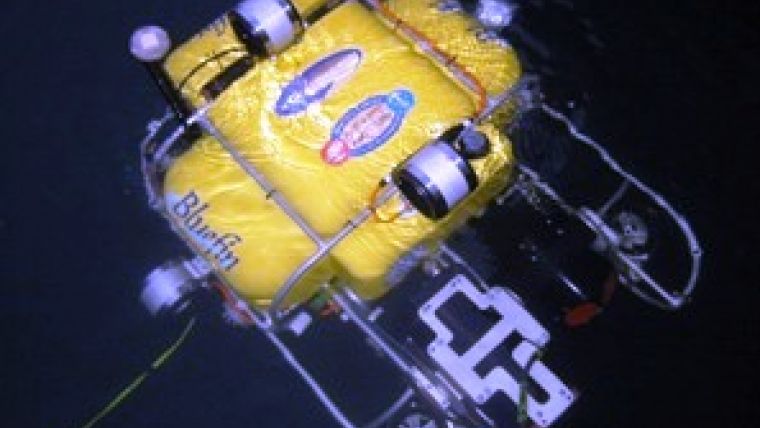AUV Fest Demonstrates Bluefin Capabilities
The AUV Fest, held July 2007 and sponsored by the Office of Naval Research, staged Bluefin Robotic's most recent vehicle capabilities. During the two-week long demonstration of autonomous underwater vehicles from around the USA, Bluefin was able to achieve two significant successes in terms of the progression of AUV technology.
The first came during a practice run of cooperative behaviours between multiple vehicles for the Autonomous Operations Future Naval Operations (AOFNC) Program. A team of two Bluefin-12 AUVs and one Bluefin-21 AUV ran offshore performing a MCM mission in synchronisation while detecting mine-like objects and generating CAD/CAC snippets of data. The AUVs then successfully transmitted data across a hi-rate WHOI Micro-Modem and a University of Texas high frequency groundwave radio installed on an autonomous kayak developed by the Massachusetts Institute of Technology (MIT). It was the first time this level of complexity has been demonstrated not only by Bluefin Robotics but by any other entity in the community. The accomplishment later was reinforced during the final demonstration phase when twelve real-time synthetic aperture sonar (SAS) snippets of mine-like contacts were transmitted by the system. AOFNC is an ONR program which sponsored the technical development of the Bluefin-12 based system as well as the various technology components referenced.
The second success resulted from the newest vehicle to the Bluefin family of AUVs, the Hovering Autonomous Vehicle (HAUV, see image). Originally developed in partnership with MIT and sponsored by the ONR Ocean Engineering Program, the Bluefin HAUV offers autonomous operations for rapid and close-range hull inspection with little to no human intervention. It is equipped with a Doppler Velocity Log, Inertial Measurement Unit, compass, GPS, and high resolution DIDSON imaging sonar. During operations in Panama City, the vehicle demonstrated high-speed acoustic communications capabilities as well as effectively imaging the bottom of a barge. The vehicle consistently imaged the area for over three hours on a single battery charge proving the reliability and robustness of the technology.














